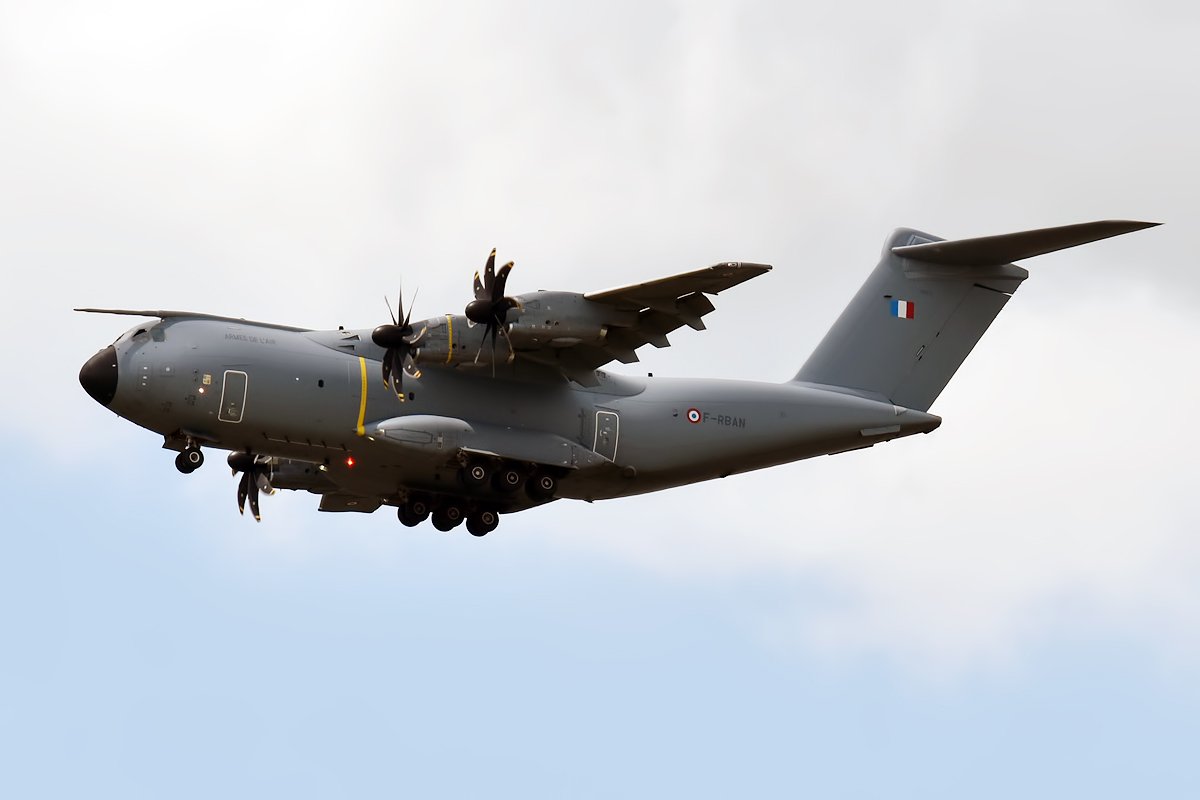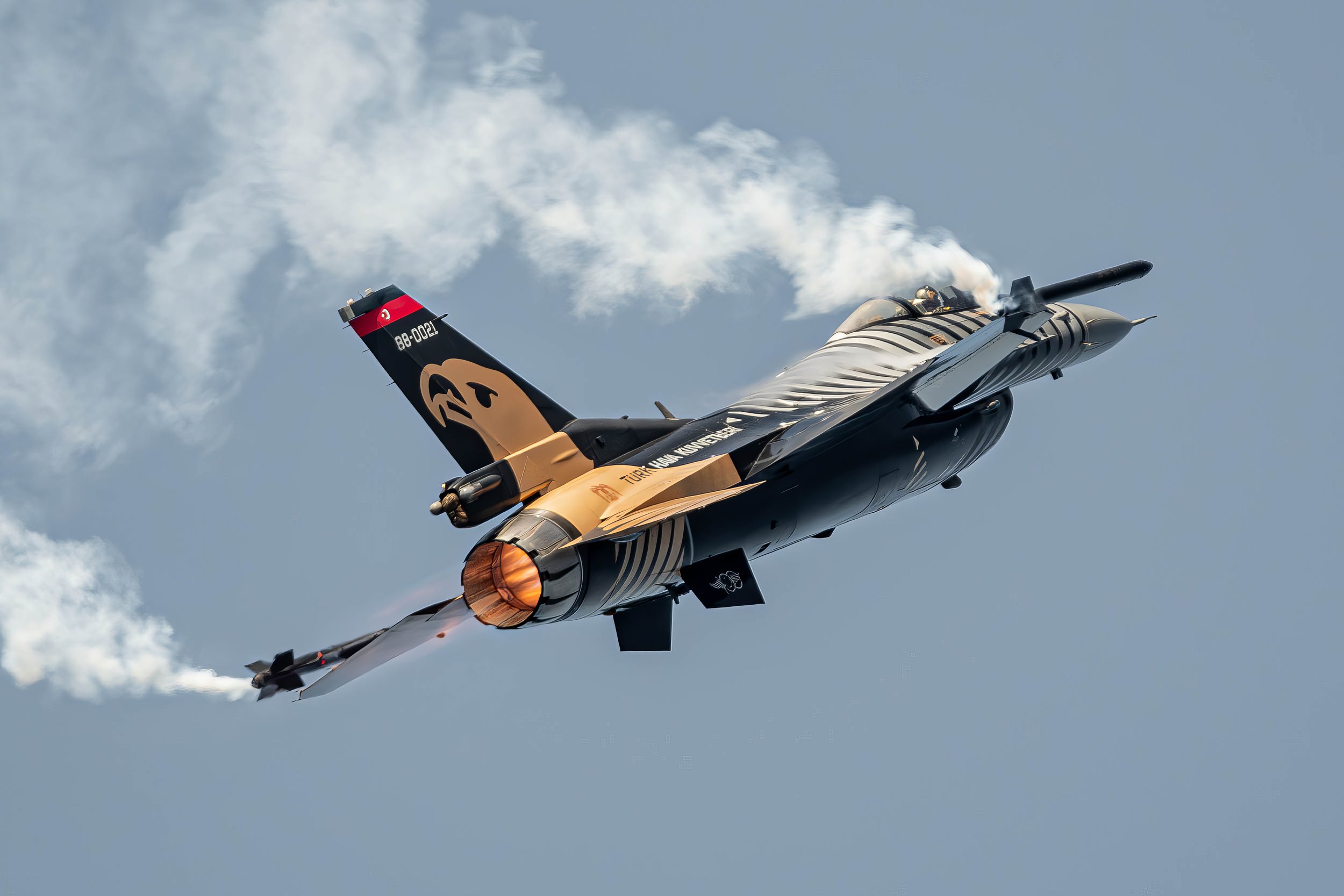French Air Force A400M Solo Display
Country
France
Aircraft
A400M Atlas
Base
Orleans-Bricy Air Base
Airbus A400M Atlas
The Airbus A400M Atlas is a European four-engine turboprop military transport aircraft. It was designed by Airbus Military (now Airbus Defence and Space) as a tactical airlifter with strategic capabilities to replace older transport aircraft, such as the Transall C-160 and the Lockheed C-130 Hercules. The A400M is between the C-130 and the Boeing C-17 in size; it can carry heavier loads than the C-130 and is able to use rough landing strips. Along with the transport role, the A400M can perform aerial refuelling and medical evacuation when fitted with appropriate equipment.
The A400M's maiden flight, originally planned for 2008, took place on 11 December 2009 from Seville Airport, Spain. Between 2009 and 2010, the A400M faced cancellation as a result of development programme delays and cost overruns; however, the customer nations chose to maintain their support for the project. A total of 174 A400M aircraft had been ordered by eight nations by July 2011. In March 2013, the A400M received European Aviation Safety Agency (EASA) certification. The first aircraft was delivered to the French Air Force in August 2013
The Airbus A400M increases the airlift capacity and range compared with the aircraft it was originally set to replace, the older versions of the Hercules and Transall. Cargo capacity is expected to double over existing aircraft, both in payload and volume, and range is increased substantially as well. The cargo box is 17.71 m long excluding the ramp, 4.00 m wide, and 3.85 m high. The maximum payload of 37 metric tons can be carried over 3,700 km. The A400M operates in many configurations including cargo transport, troop transport, and medical evacuation. It is intended for use on short, soft landing strips and for long-range, cargo transport flights. The A400M is large enough to carry six land rovers and trailers, or two light armoured vehicles, or a dump truck and excavator, or a Patriot missile system, or a Puma or Cougar helicopter, or a truck and 25-ton trailer.
It features a fly-by-wire flight control system with sidestick controllers and flight envelope protection. Like other Airbus aircraft, the A400M has a full glass cockpit. Most systems are loosely based on those of the A380, but modified for the military mission. The hydraulic system has dual 207 bar (3,000 psi) channels powering the primary and secondary flight-control actuators, landing gear, wheel brakes, cargo door and optional hose-and-drogue refuelling system. As with the A380, there is no third hydraulic system. Instead, there are two electrical systems; one is a set of dual-channel electrically powered hydraulic actuators, the other an array of electrically/hydraulically powered hybrid actuators. The dissimilar redundancy provides more protection against battle damage.
More than 30 per cent of the aeroplane's structure is made of composite materials. The 42.4 m span wing is primarily made of carbon fibre reinforced plastic components, including the wing spars, the 19 m long, 12–14 mm thick wing skins, and other parts. The wing weighs about 6,500 kg, and it can carry and lift up to 25,000 kg of fuel. It has an aspect ratio of 8.1, a wide chord of 5.6 m, and a sweep angle of 15 degrees at a 25 per cent mean aerodynamic chord.
The A400M has a T-tail empennage. Its vertical stabilizer is 8.02 m tall, while the horizontal stabilizer spans 19.03 m with a sweep of 32.5 degrees.
The Ratier-Figeac FH385 propellers turn counterclockwise and the FH386 clockwise. The eight-bladed scimitar propellers are made from a woven composite material. It is powered by four Europrop TP400-D6 engines rated at 11,000 hp each. The TP400-D6 engine is the most powerful turboprop engine in the West to enter operational use.
The pair of propellers on each wing turn in opposite directions, with the tips of the propellers advancing from above towards the midpoint between the two engines. This is in contrast to the overwhelming majority of multi-engine propeller driven aircraft where all propellers turn in the same direction. The counter-rotation is achieved by the use of a gearbox fitted to two of the engines, and only the propeller turns in the opposite direction; all four engines are identical and turn in the same direction. This eliminates the need to have two different "handed" engines on stock for the same aircraft, simplifying maintenance and supply costs; this configuration, dubbed down between engines (DBE), allows it to produce more lift and lessens the torque and prop wash on each wing. It also reduces yaw in the event of an outboard engine failure. Because of these benefits, the vertical stabilizer can be reduced by 17 per cent in size, while the size of the horizontal stabilizer can be shrunk by 8 per cent.
A forward-looking infrared enhanced vision system (EVS) camera provides an enhanced terrain view in low-visibility conditions. The EVS imagery is displayed on the HUD for low altitude flying, demonstrating its value for flying tactical missions at night or in the cloud. EADS and Thales provide the new Multi-Colour Infrared Alerting Sensor (MIRAS) missile warning sensor for the A400M.
The A400M has a removable refuelling probe mounted above the cockpit, allowing it to receive fuel from drogue-equipped tankers. Optionally, the receiving probe can be replaced with a fuselage-mounted UARRSI receptacle for receiving fuel from boom equipped tankers. It can also act as a tanker when fitted with two wing-mounted hose and drogue under-wing refuelling pods or a centre-line Hose and Drum unit. The refuelling pods can transfer fuel to other aircraft at a rate of 20.0 kg/s.
The A400M features deployable baffles in front of the rear side doors, intended to give paratroops time to get clear of the aircraft before they are hit by the slipstream.
| Back to Top |

Photo by: Anna Zvereva
License: Creative Commons Attribution-Share Alike 2.0
| Back to Top |

































